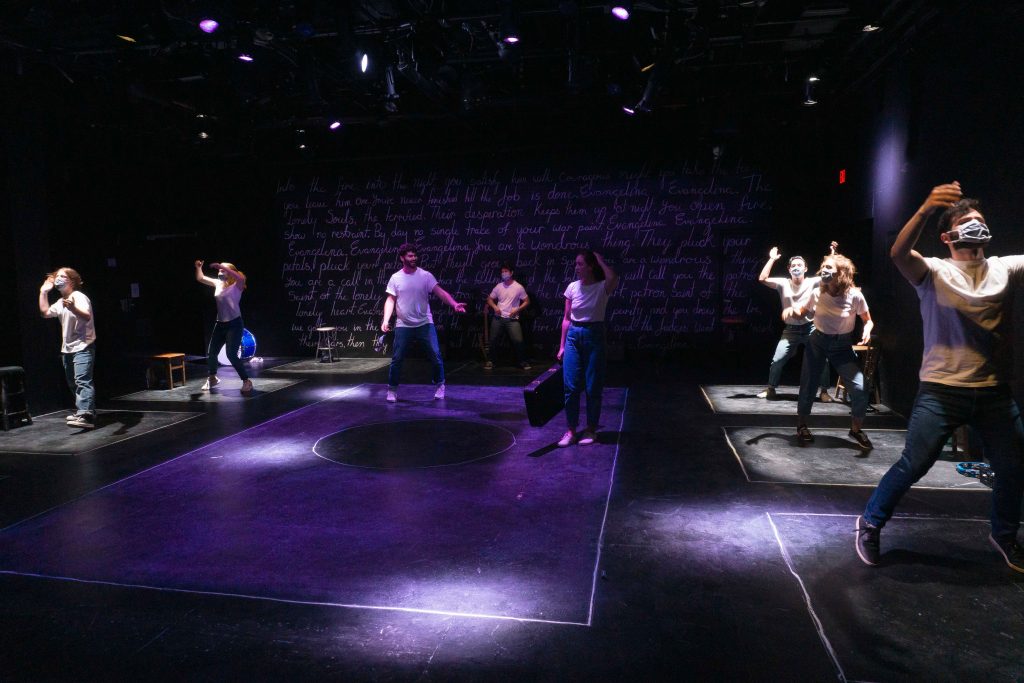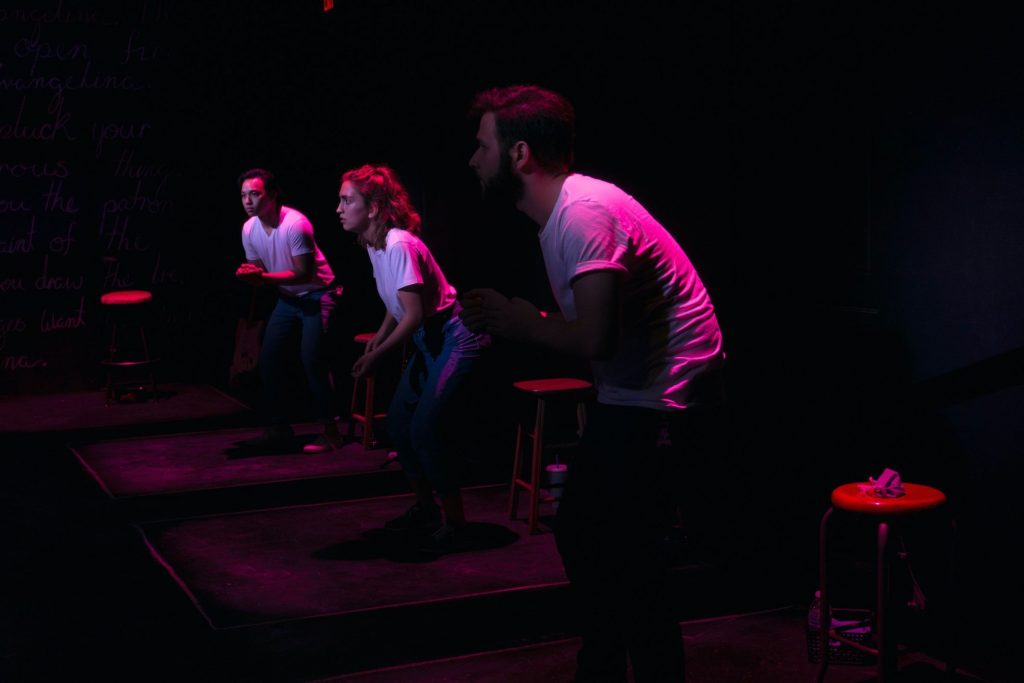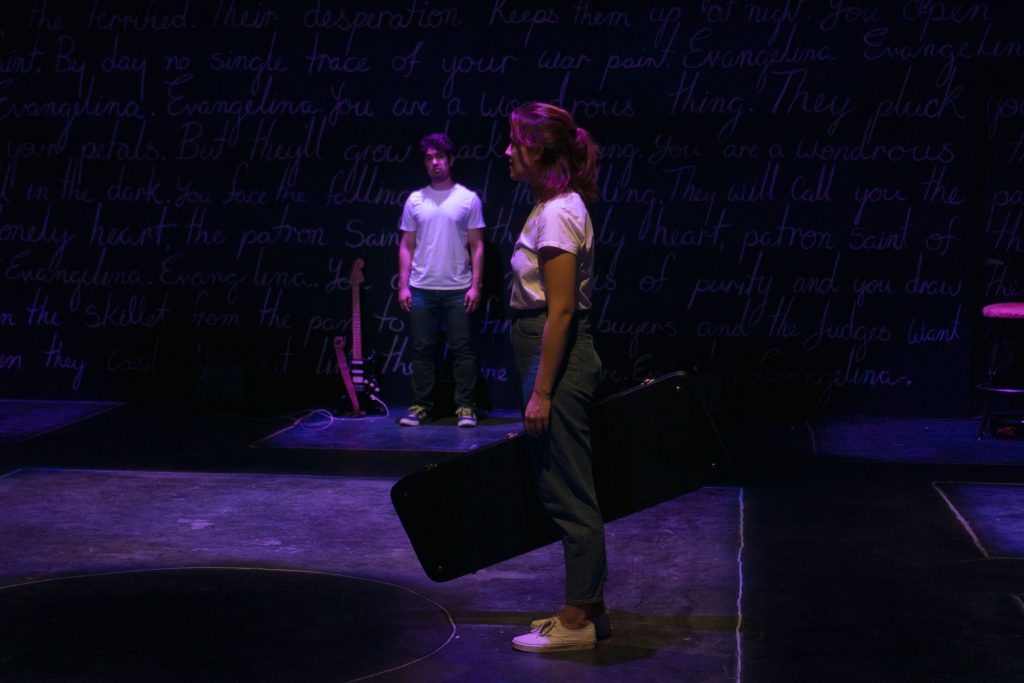
Credit: Amir Tabatabei
Free and live-streamed from Studio 58 until October 17, 2020
Information: studio58.ca
Posted October 14, 2020
Studio 58 boldly steps up to the plate with its first-ever live-streamed performance with The Doll’s House Project; this online presentation is available until October 17 and its free!
But for Henrik Ibsen devotees it’s important to note that this production, directed by Laara Sadiq, is freely based on Ingmar Bergman’s controversial 1981 adaptation of The Doll’s House. The Ibsen original was, itself, so controversial it is said that when Nora shut the door as she walked out on the marriage and her children, the sound of that door shutting was heard all over Europe. Often referred to as the “father of modern drama”, Ibsen is also spoken of as an early feminist.
However, the Bergman adaptation reportedly places Nora’s husband Helmer in a sympathetic role, crushed by the newly-headstrong Nora who is weary of being her husband’s “little skylark”, his “little squirrel”, his “doll wife”. Bergman said in a 1981 interview, “I see Helmer as a very nice guy, very responsible. Ibsen’s play”, he added, “is really the tragedy of Helmer.” Holy Gloria Steinem!

Credit: Amir Tabatabei
Director Sadiq’s vision is certainly bold and inventive. With a nod to Bertolt Brecht, all nine players remain on stage throughout. And with the theatre’s 21st century commitment to gender equality, all the actors play both male and female roles. Moreover, the roles are in flux: one minute a young woman is Nora; later she is Helmer, Dr. Rank, Krogstad, Mrs. Linde or Nora again. Ditto the young men. There are only very subtle voice or body language changes to tip us off. They all wear well-worn jeans and t-shirts. Seated on stools and face-masked when not directly in the action, the performers move quickly around the perimeter of a centre-stage, brightly illuminated circle. From the press release: “This stripped down staging focuses on voice, bodies in motion and live music and asks the question, “How did we get here?””
“Here” is the showdown between Nora and Helmer and in the original play it is the last scene. Sadiq, however, opens what is billed as The Doll’s House Project with that last scene and moves back in time, showing the stages of the dissolution of the marriage, and then she repeats that final, door-shutting scene again at the end.
Not having seen the Bergman adaptation, I’m ill-equipped to comment on how closely this Studio 58 production follows it. But this Helmer is not particularly likeable – for all the reasons Ibsen gives us, including Helmer’s patronizing attitude toward what is, arguably, a childlike Nora. Here, again, our sympathy is with Nora and we applaud her decision to make her own way.
In the repeated last scene, all the actors take turns with the lines. It becomes a chorus – a sort of metatheatre moment – with all the young performers in a choric plea for freedom to be the person they want to be. It is a sweet moment.

Credit: Amir Tabatabei
It’s probably useful to think of this production as The Doll’s House Project because a ‘project’ is what it feels like. On that level, this Studio 58 production is successful and interesting. Live music (directed by Marguerite Witvoet), performed by the actors on electric guitars, drums, fiddle and trumpet, flesh out the presentation, and Nora’s frenetic dance, performed by Mikenzie Page, with lots of hair-flinging and air-guitaring, completely captures the frenzy of Ibsen’s Nora. Movement director and choreography is by Noam Gagnon. Lighting design is by Alan Brodie; costume and set design by Jessica Oostergo. But the perpetual role-switching makes the narrative very difficult to follow – even for those familiar with the play.
In spite of Bergman’s empathy for Helmer, it is extremely difficult in this day and age to drum up much pity for Helmer. Sadiq presents a more balanced perspective on this 19th century classic: Helmer is both vilified and pitied. And her Nora is decidedly, at the end, loud and headstrong; she doesn’t just shut the door, she slams it. No matter how you cut it, this is still Nora’s story.

